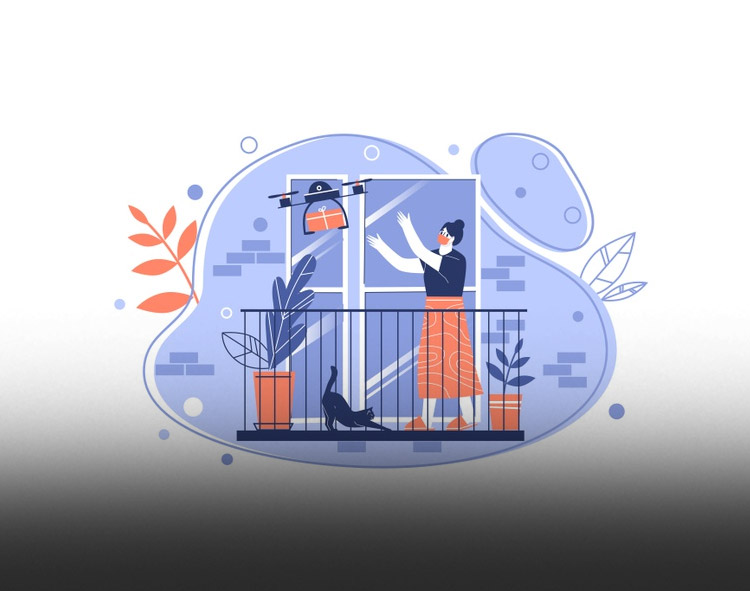Changes in workplace trends, consumer buying habits and preferred payment options are reshaping the face of business and the future of retail and payments
In 2020, COVID-19 disrupted several elements of business, economics and human existence. From employment norms to medical process, global companies across a range of industries had to act swiftly to ensure rapid internal transformations could be put in place to meet changing everyday needs.
The Covid-19 pandemic set a new foundation for 2020, where buying habits were influenced by need for supplies that can help prevent spread of the disease (sanitizers) to prioritizing ‘’essential’’ supplies and their continued flow via contact less delivery modes and payment options.
Read More: GlobalFintechSeries Interview with Charles Delingpole, Founder and CEO at ComplyAdvantage
As businesses and teams step into 2021, with the effects of the Covid-19 pandemic still continuing, what are some of the biggest learnings from 2020 that should stay at the forefront?
Web-based businesses; Strengthening e-commerce
Physical retailer stores and even food outlets faced the biggest brunt of the 2020 Covid-19 inspired lockdowns. Larger players (UberEats, Amazon) with technology-focused customer offerings that allowed users to order online, pay online and rely on contactless deliveries could safely withstand the immediate challenges imposed by physical lockdowns.
The future is digital and closure of retail stories shows that providers and innovators who do not cut corners when it comes to enhancing their customer offering using digital modes will be able to grow faster and withstand sudden economic and business challenges (pandemics, lockdowns, calamities).
Mobile apps, web site based order and delivery, easy checkouts, seamless online payment processes can allow providers across a range of services, from direct to consumer goods to online learning services to deliver their products in a hassle-free manner and ensure a constant flow of business and customers.
Cash and Contactless payments
While experts have predicted that growth in contactless payments will lead to a faster transformation to a cashless society, given the rise in payment frauds, debit and credit card scams, and lower ability of underbanked sections and senior age groups of the population to use technology for cashless payments, while business learn to thrive despite the pandemic, direct to consumer goods providers should also prioritize investment in strong online and contactless payments infrastructure while also keeping limits and options for cash transactions (with precautionary measures) open.
This will allow providers to ensure fewer potential customers do not drop off midway in their customer buying journey. Tap-to-pay facilities via Apple Pay and other cards are in use in several retail outlets now and largely considered safer, disease-free modes of payment.
More potential for Online sellers of Direct to Consumer goods
Fears of shopping in physical stores have not completely disappeared yet. Online purchase of direct to consumer services and goods saw a steady rise in 2020 as a result of the pandemic and with the effects of Covid-19 still something to worry about, sellers actually have more opportunity now to diversify their customer offering and customer base based on current business trends and customer needs and buying habits;
With 2020 being the first year of the global spread of the disease buying habits had to undergo a change. But online sellers can already have a fair idea of what 2021 can hold for them, with the news of the vaccine, the distribution of it and the race to resume a pre-Covid-19 semblance of life and businesses, sellers can be prepared for the year using the right business insights and predictions.
All of this denotes how online sellers can stay prepared for the immediate near-term needs of their customers by identifying potential buying trends.
Read More: GlobalFintechSeries Interview with Marco Margiotta, CEO at Payfare
Self-service and Checkout free retail
Improved point of sale payments and services at physical stores also mean that business owners will have to prioritize facilities like checkout free retail to ensure customer safety. Technologies that support safer transactions online and offline will grow faster in 2021 as business adapt to today’s changing buying preferences globally. Self-service facilities, no-touch menu options at restaurants, virtual app shopping experiences, touchless retail, 3d shopping and augmented online experiences will create a shift in how businesses and consumers interact with each other using virtual interfaces.
Long-lasting Changes to Stay
Covid-19 was devastating in many ways but also served to be a learning point in many ways. Business leaders have understood the criticality surrounding safe digital transactions and a balance of offline and online offerings. Long lasting effects in terms of how technologies will drive growth in payments trends, shopping trends and customer service trends based on the effects of the 2020 pandemic will create new fundamentals for businesses.
